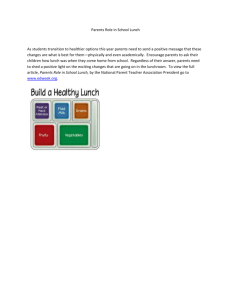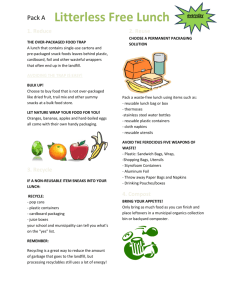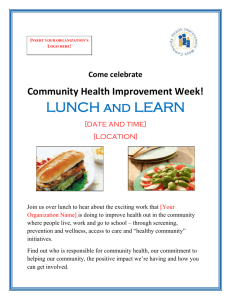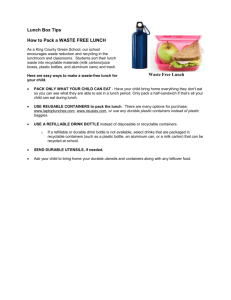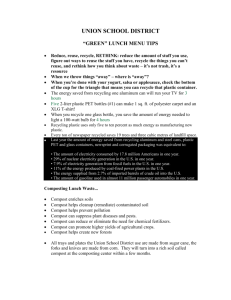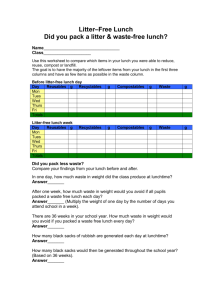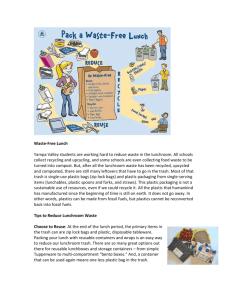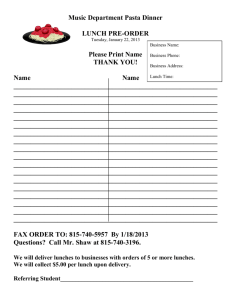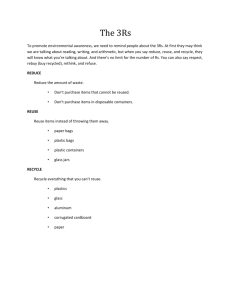Joseph Sears School Lunchroom and Snacks – HOW TO BE GREEN!
advertisement
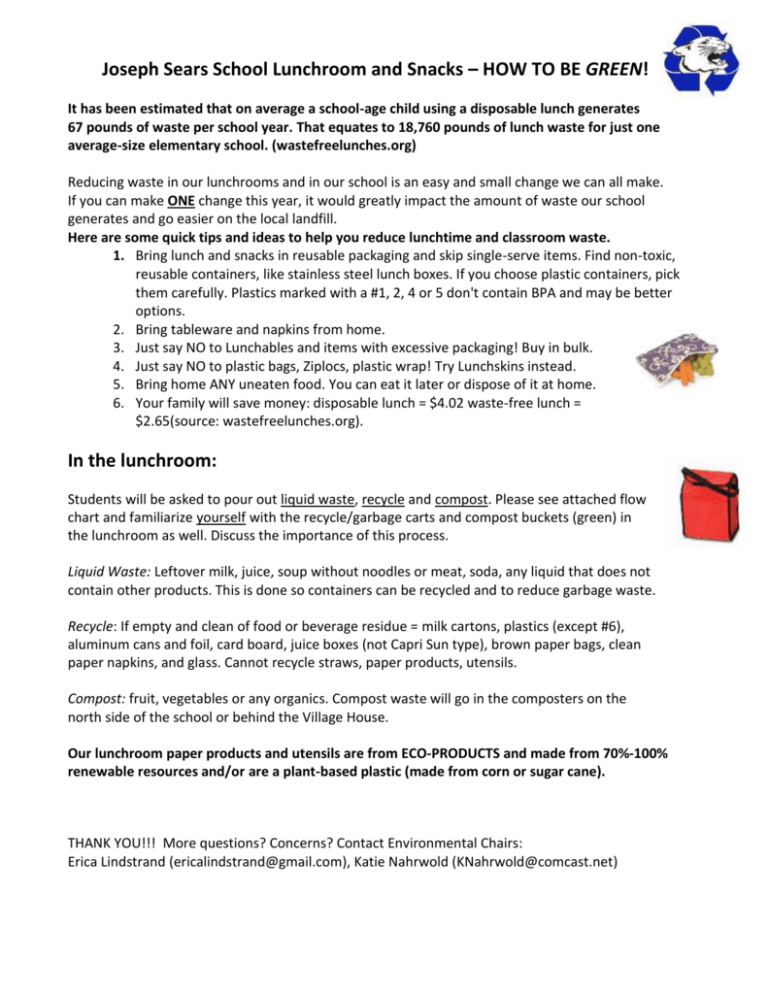
Joseph Sears School Lunchroom and Snacks – HOW TO BE GREEN! It has been estimated that on average a school-age child using a disposable lunch generates 67 pounds of waste per school year. That equates to 18,760 pounds of lunch waste for just one average-size elementary school. (wastefreelunches.org) Reducing waste in our lunchrooms and in our school is an easy and small change we can all make. If you can make ONE change this year, it would greatly impact the amount of waste our school generates and go easier on the local landfill. Here are some quick tips and ideas to help you reduce lunchtime and classroom waste. 1. Bring lunch and snacks in reusable packaging and skip single-serve items. Find non-toxic, reusable containers, like stainless steel lunch boxes. If you choose plastic containers, pick them carefully. Plastics marked with a #1, 2, 4 or 5 don't contain BPA and may be better options. 2. Bring tableware and napkins from home. 3. Just say NO to Lunchables and items with excessive packaging! Buy in bulk. 4. Just say NO to plastic bags, Ziplocs, plastic wrap! Try Lunchskins instead. 5. Bring home ANY uneaten food. You can eat it later or dispose of it at home. 6. Your family will save money: disposable lunch = $4.02 waste-free lunch = $2.65(source: wastefreelunches.org). In the lunchroom: Students will be asked to pour out liquid waste, recycle and compost. Please see attached flow chart and familiarize yourself with the recycle/garbage carts and compost buckets (green) in the lunchroom as well. Discuss the importance of this process. Liquid Waste: Leftover milk, juice, soup without noodles or meat, soda, any liquid that does not contain other products. This is done so containers can be recycled and to reduce garbage waste. Recycle: If empty and clean of food or beverage residue = milk cartons, plastics (except #6), aluminum cans and foil, card board, juice boxes (not Capri Sun type), brown paper bags, clean paper napkins, and glass. Cannot recycle straws, paper products, utensils. Compost: fruit, vegetables or any organics. Compost waste will go in the composters on the north side of the school or behind the Village House. Our lunchroom paper products and utensils are from ECO-PRODUCTS and made from 70%-100% renewable resources and/or are a plant-based plastic (made from corn or sugar cane). THANK YOU!!! More questions? Concerns? Contact Environmental Chairs: Erica Lindstrand (ericalindstrand@gmail.com), Katie Nahrwold (KNahrwold@comcast.net)
